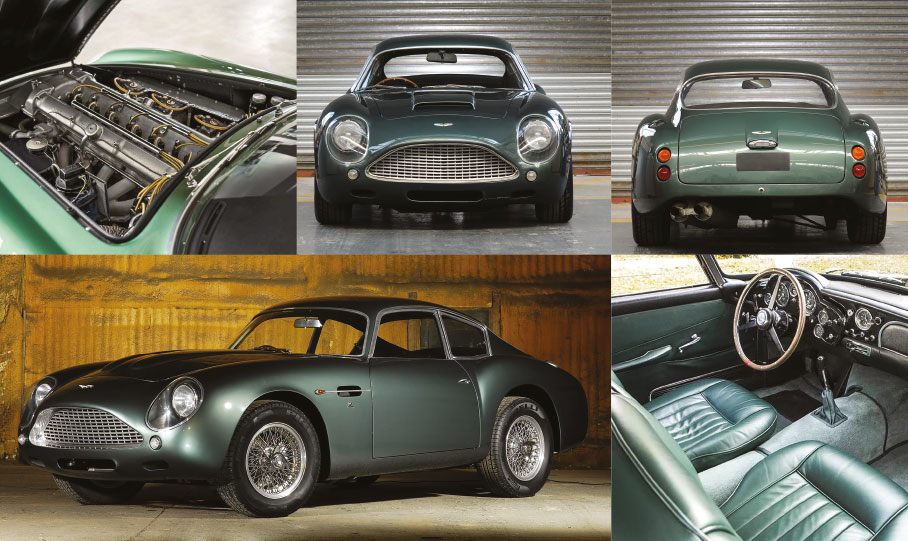Since 1919 the Italian carrozzeria has built a legacy as one of the world’s most storied design houses and coachbuilders. Recent collaborations with elite automakers now boldly aim the company into its next hundred years…
In the early days of the automobile, customers didn’t buy a vehicle like they do today, as a single finished product. Instead, one would purchase a chassis and powertrain from the likes of Rolls-Royce, Duesenberg, or Mercedes-Benz, and then hire a coachbuilder to tailor the body and bespoke interior to exacting needs. For grease-mottled aficionados and historians, the names of these artisans are as famous as the automakers themselves. And although Brits, Swiss, French, and even Americans take pride in their own design, it is the Italian carrozzeria who led the way: Pininfarina. Ghia. Scaglietti. Touring. Bertone. Vignale.
And of course, Zagato.
The brand — formed in 1919 by plane and car laborer Ugo Zagato — is the only surviving Italian coachbuilder from that halcyon era that is still family owned. Andrea Zagato, the grandson of Ugo and living scion of the “Lightning Z” crest, now leads the brand into the 21st century.
The foundation of Zagato’s work was Ugo’s proficiency in aircraft, which allowed him to integrate aeronautic philosophies such as lightweight materials and aerodynamics into his designs. Eschewing the idea of automobiles as bulky, heavy machines and instead conceiving of them as lightweight architecture — whose shells were constructed of sheet aluminum, like that found in aircraft fuselage — was a quantum leap in automotive design, one that revolutionized the industry and made the Zagato name famous.

The company’s foundation was established with the racing success Zagato enjoyed in its first decade of existence. Collaborations with Alfa Romeo produced unprecedented success: From 1928 to 1930, Alfa Romeo 1750 Zagatos claimed first place in the Mille Miglia, the legendary thousand-mile road race running from Brescia to Rome and back. In that last year, Zagato-built Alfas snatched the first four finishes, cementing the brand’s legacy as one of the most successful performance-oriented coachbuilders of the prewar period.
It is telling that both Ettore Bugatti and Enzo Ferrari — two looming giants in the history of motorsports — worked with Ugo. His machines were masterpieces of aerodynamics decades before computers and wind tunnels. His tapered lines, rounded corners, and sleek curves are still hallmarks of the Zagato brand to this day. Ugo is said to have innovated raked windscreens and convex boot lids, and was the first to incorporate headlights into the bodywork to reduce drag, a concept in its infancy at the time. For interiors, Zagato also thought light, dispensing with art nouveau flamboyance and overwrought accoutrements that were in fashion at the time (e.g., Victorian upholstery, deeply cushioned buttons, bulb horns, etc…). This mind-set continued and evolved after WWII, when a design philosophy called panoramica debuted. Panoramica vehicles from Maserati and Ferrari favored the kind of space and airiness found in a greenhouse, utilising plexiglass to create novel curvatures, shed weight, and optimize visibility.
When Ugo’s eldest son, Elio, graduated university, he seized an important role in the company, continuing Zagato’s remarkable racing pedigree by reaching the podium in 83 of 160 races. Behind the wheel of cars like the Fiat 8V Zagato, Elio dominated the newly conceived Gran Turismo category in the 1950s. The decade was crowned with Ugo winning the prestigious Compasso d’Oro design prize for his Fiat Abarth 1000 Zagato. Around the same time, the landmark Aston Martin DB4 Stradale GTZ premiered at the London Motor Show, inaugurating a long and decorated partnership between the two brands.
“Keeping the brand in the family gave us a competitive advantage, and that means independence. It also allowed us to have a direct relationship with the client,” explains Elio’s son Andrea, the current CEO of Zagato. He compares Zagato’s client-oriented approach to that of Enzo Ferrari, who was known to personally deliver cars to customers.
Innovation continued with the controversial Alfa Romeo S.Z., a vehicle so polarising it’s both beloved and derided as “Il Mostro.” The 1989 experimental coupe was the first sports car to be entirely designed using CAD technology. In the decades that followed, Zagato organised a single-brand race series for the aforementioned Alfa S.Z., and built landmark one-off specimens like the Lamborghini Raptor (awarded “Best Concept” at the 1996 Geneva International Motor Show). In 2011 the brand marked the Fiat-Chrysler marriage with the TZ3 Stradale, sheathing a Dodge Viper in a Zagato-designed Alfa Romeo suit. There was the Virage Shooting Brake, one of three one-offs built to celebrate 100 years of Aston Martin. The track car Zagato Mostro powered by Maserati followed, as did the Lamborghini 5-95, celebrating the Raging Bull’s 50th (and the company’s 95th) anniversary.
The last few years have seen the Lightning Z design an ultra-sleek MV Agusta motorcycle, an entire family of limited-edition Vanquish S’s for Aston Martin, and most recently the IsoRivolta Vision Gran Turismo Zagato. Despite rapid changes in the automotive landscape, Andrea is not worried; he believes the current and future appeal of Zagato is aligned with the company’s aim of remaining eternally classic. “We are witnessing a sharp acceleration in changes… we will be having more thrust forward in the next ten years than we had in the past fifty,” he says. “But we have been making collectibles in design since 1919. Like collector-worthy watchmaking, this market segment will survive all technological changes.” ■
BY NICOLAS STECHER
For the full article grab the June 2018 issue of MAXIM Australia from newsagents and convenience locations. Subscribe here.




